Economy

Global Steel Production Records Tumbled in May
Written by Peter Wright
June 28, 2018
Production increased by 1.33 percent in May and for the first time exceeded 150 million metric tons, according to the latest Steel Market Update analysis of World Steel Association data. In three months through May, China grew by 7.7 percent year over year as the rest of the world grew by 3.3 percent. In 2018, China is increasing its share of global steel production, which now stands at an all-time high of 52.4 percent.
In 2017, total global steel production was 1.645 billion metric tons, up by 5.0 percent from 2016. In 12 months through May 2018, global production hit 1.719 billion metric tons, another all-time high. Production in the month of May totaled 154,856,000 metric tons, up from 147,894,000 in the month of April. Capacity utilization in May was 78.0 percent. The three-month moving averages (3MMA) that we prefer to use were 150,343,000 metric tons and 75.8 percent, respectively. May was the first month for the 3MMA of production to exceed 150 million metric tons. Figure 1 shows monthly production and capacity utilization since January 2000. May was the first time for the annualized rate (May x12) to exceed 1.8 billion metric tons. On a tons-per-day basis, production in May was 4.995 million metric tons with a 3MMA of 4.903 million metric tons. This was a record high on both counts. In December 2016, the OECD’s steel committee estimated that global capacity would increase by almost 58 million metric tons per year between 2016 and 2018 bringing the total to 2.43 billion tons. That forecast is coming to pass as capacity is now 2.4 billion tons.
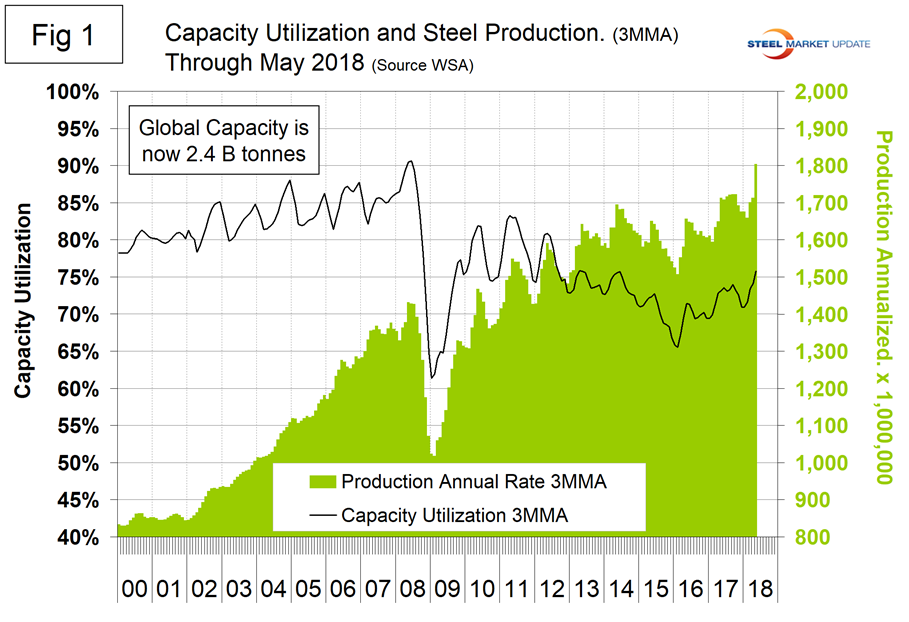
As we dig deeper, we start with seasonality. On average, global production peaked in the early summer in the years 2010 through 2016, but last year the second half downtrend was delayed until November. Figure 2 shows the average tons per day of production for each month since 2008. In those 11 years on average, May has declined slightly; this year May was up by 1.33 percent.
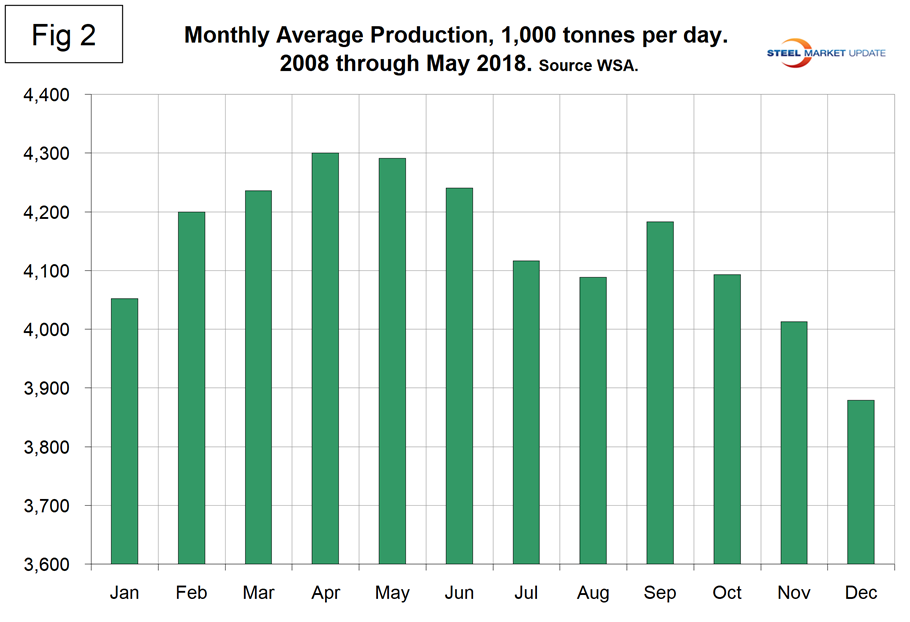
Figure 3 shows the monthly year-over-year growth rate on a 3MMA basis since January 2005. Production began to contract in March 2015 and the contraction accelerated through January 2016 when it reached negative 5.4 percent. Growth became positive in May 2016, reached a rate of 5.1 percent in October last year, leveled off at 4.6 percent in January through April this year, and accelerated to 5.1 percent in May.
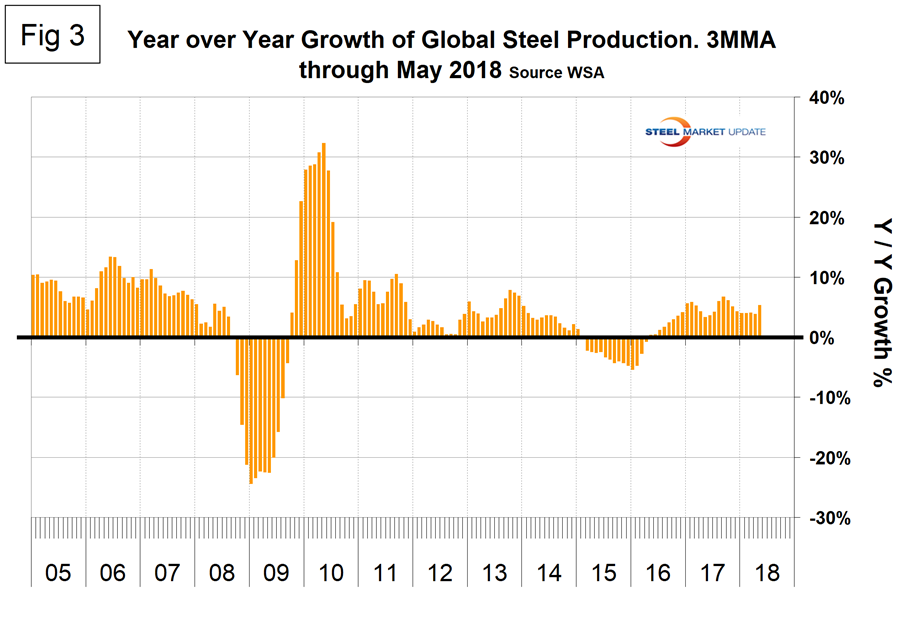
Table 1 shows global production broken down into regions, the production of the top 10 nations in the single month of May, and their share of the global total. It also shows the latest three months and 12 months of production through May with year-over-year growth rates for each period. Regions are shown in white font and individual nations in beige. The world overall had positive growth of 5.4 percent in three months and 5.1 percent in 12 months through May. When the three-month growth rate exceeds the 12-month growth rate, as it did in May, we interpret this as a sign of positive momentum. This was the first month of positive momentum since November last year. On the same basis, China grew by 7.4 percent and 6.2 percent. On a regional basis, other Europe led by Turkey had the highest growth rate in 12 months year over year. Table 1 shows that North America was up by 4.9 percent in three months. Within North America, the U.S. was up by 4.3 percent, Canada was up by 4.5 percent and Mexico was up by 7.5 percent.
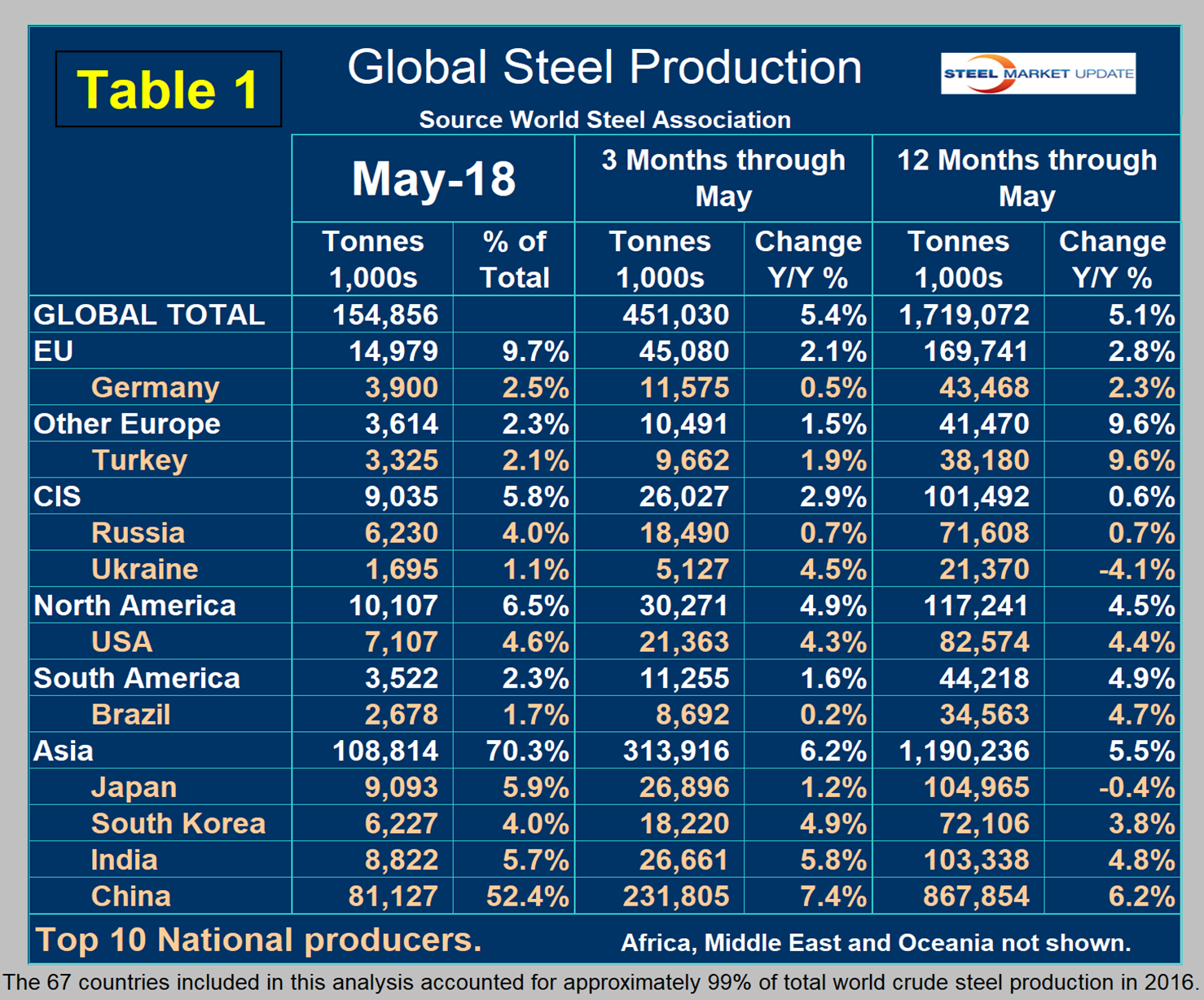
In the 12 months of 2017, 115.3 million metric tons were produced in NAFTA of which 70.8 percent was produced in the U.S., 11.9 percent in Canada and 17.3 percent in Mexico.
Figure 4 shows China’s production since 2005 and Figure 5 shows the year-over-year growth. In the three months through January 2018, China’s growth rate was lower than the rest of the world. That changed in February through May this year when China’s growth exceeded the rest of the world by 0.5, 1.3, 1.4 and 2.0 percent in the respective months. Therefore, production was accelerating. China now has an all-time high share of global production of 52.4 percent—the first time it ever exceeded 52 percent. As we have said before in these SMU updates, the much-publicized capacity reductions in China are not the same as actually cutting production.
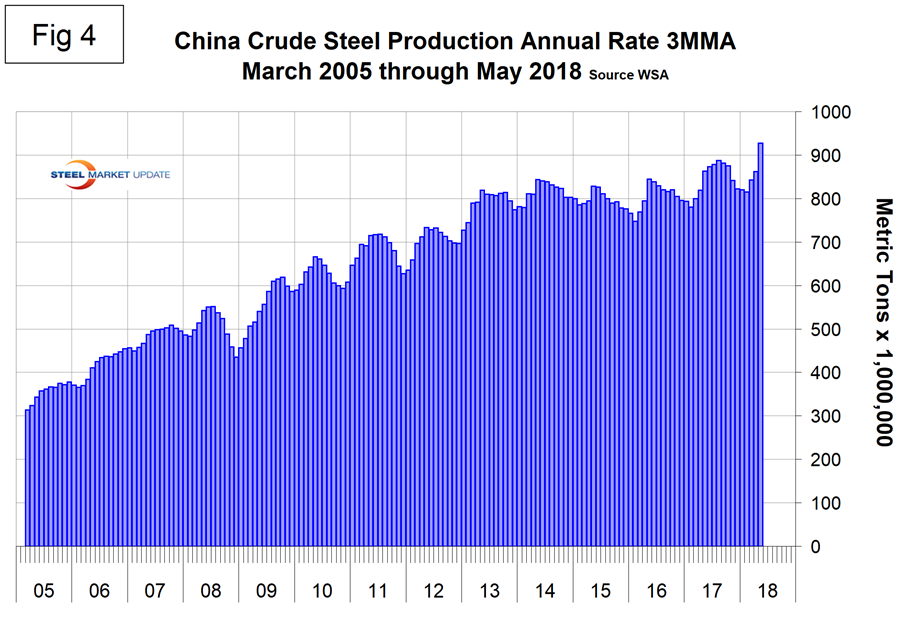
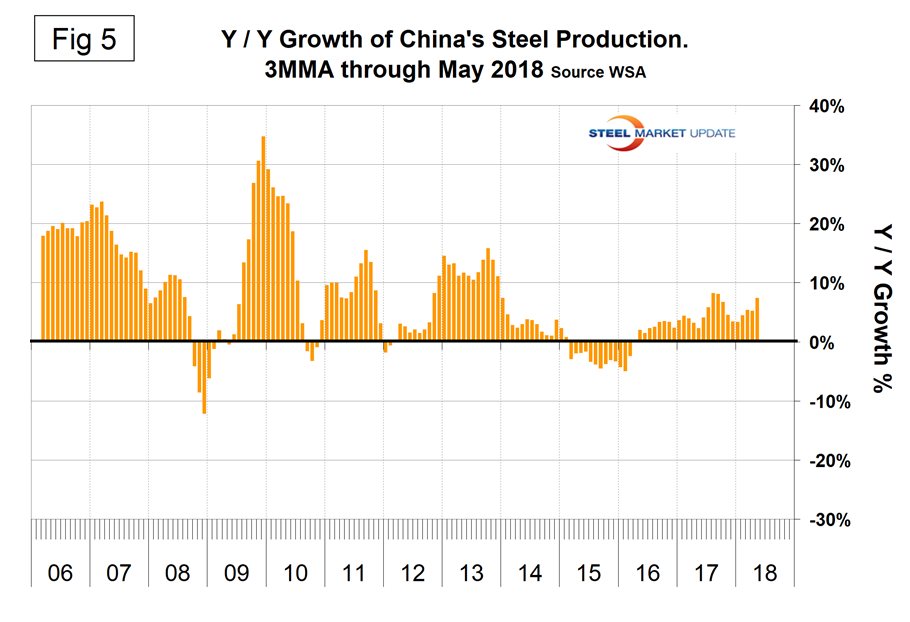
The April WSA Short Range Outlook (SRO) for apparent steel consumption in 2018 and 2019 is shown by region in Figure 6. The WSA forecasts global steel demand will reach 1,616.1 million tons in 2018, an increase of 1.8 percent over 2017. In 2019, it is forecast that global steel demand will grow by 0.7 percent to reach 1,626.7 million tons. Commenting on the outlook, WSA Economics Committee Chairman T.V. Narendran said, “In the next couple of years the global economic situation is expected to remain favorable with high confidence and strengthening recovery of investment levels in advanced economies. Benefitting from this, steel demand in both developed and developing economies is expected to show sustained growth momentum with risks relatively limited. However, possible adverse impact from rising trade tensions and the probable U.S. and EU interest rate movements could erode this current momentum. The outlook for steel demand in the U.S. remains robust on the back of the strong economic fundamentals – strong consumption and investment due to high confidence, rising income and low interest rates. The manufacturing sector is being supported by a low dollar and increasing investment, while rising housing prices and steady non-residential sector growth point to a healthy construction sector. Though the recent tax reform is further expected to boost steel demand through its positive impact on investment, there is some concern over a possible overheating of the economy. The announced infrastructure plan is unlikely to affect steel demand in the short term.”
The WSA is one of the largest industry associations in the world. Members represent approximately 85 percent of the world’s steel production, including over 160 steel producers, national and regional steel industry associations and steel research institutes.
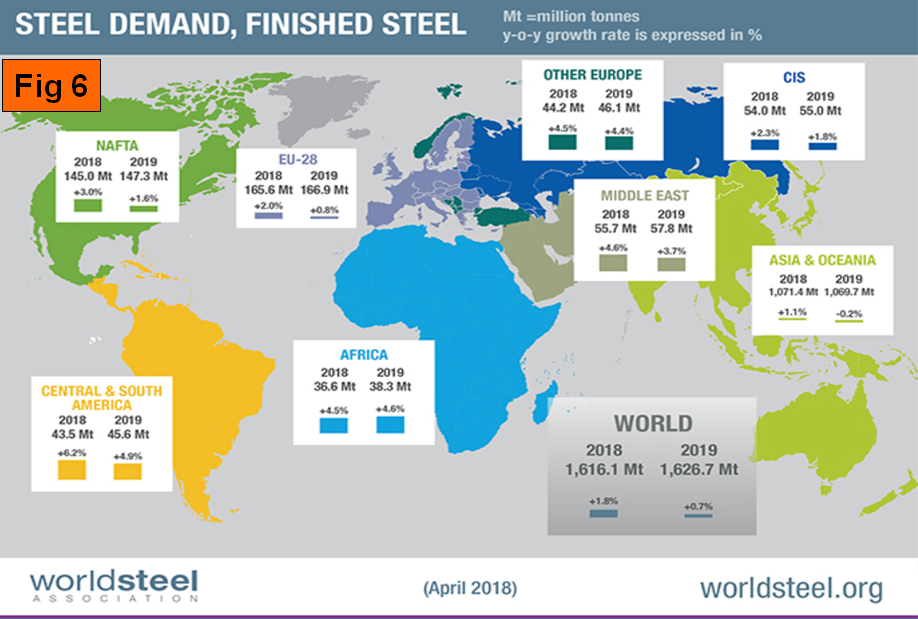
SMU Comment: Just about every production record tumbled in May. If present trends continue, Chinese pressure on the global steel market will worsen. In three months through May, China’s production grew by 7.4 percent, which was more than twice as fast as the rest of the world. Reality seems to be that old plants are being closed as existing ones increase production and new plants come on stream. WSA increased its forecast for steel consumption in 2018 from 1,548.5 million metric tons in its April 2017 forecast to 1,616.1 million metric tons in its April 2018 forecast. In its April forecast, the International Monetary Fund raised its projection for global growth in 2018 and 2019, which will have a positive effect on global steel consumption, particularly in the developing world.

Peter Wright
Read more from Peter WrightLatest in Economy

ISM: Manufacturing expansion loses steam after two months of growth
US manufacturing activity slowed in March after two straight months of expansion, according to supply executives contributing to the Institute for Supply Management (ISM)’s latest report.

Chicago Business Barometer rose to 16-month high in March
The Chicago Business Barometer increased for the third-consecutive month in March. Despite this, it still reflects contracting business conditions, as it has since December 2023.

Durable goods orders rise again in February
Transportation equipment led the increase, rising 1.5% to $98.3 billion.

Consumer confidence falls for fourth consecutive month
People remain concerned about inflation, trade policies, and tariffs.

Housing starts ticked up in February
Single-family starts last month hit a rate of 1.10 million, a month-over-month increase of 11.4%, census data shows.
